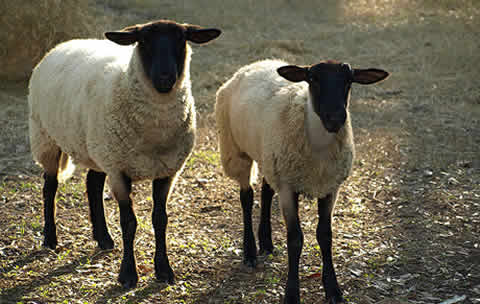
The Sheep Scab (Scotland) Order 2010 comes into force from 17 December 2010 and reinstates sheep scab as a notifiable disease in Scotland. Dr David Bartram from Pfizer VPS has compiled a summary of the new legislation’s main points and is encouraging sheep farmers in England, Wales and Northern Ireland to emulate suitable elements that will help protect their flocks from sheep scab.
A full copy of the legislation can be downloaded from our knowledge centre here Scottish Sheep Scab Legislation
The new legislation requires that in Scotland a person who has possession of, or is in charge of, any sheep or carcase(s) which they know or suspect has sheep scab must notify the divisional veterinary manager (DVM) of that knowledge or suspicion as soon as possible. Failure to notify is a criminal offence. If anyone other than the owner/keeper who has sheep in their charge (e.g. vet, haulier etc) notifies the DVM that they suspect scab, that person must also advise the owner/keeper that the DVM has been notified.
Immediately, the owner or keeper of the sheep must apply self-imposed movement restrictions, except for movements for treatment, to slaughter or under notice/licence. Movement restrictions remain in place until the sheep are slaughtered or one of three things happens:
1. All affected sheep are treated, 16 days have elapsed since treatment, and treatment details (date of treatment, number of sheep treated and treatment used) are notified by the owner to the DVM in writing within two weeks of treatment, or
2. All sheep on the premises have been treated with a treatment that provides at least 16 days’ residual protection against re-infestation , or
3. The DVM receives written confirmation from a veterinary surgeon that, in their opinion, there are no affected sheep or carcases on the premises and there have not been any affected sheep or carcases on the premises within the previous 16 days.
Investigation and diagnosis by a veterinary surgeon is not mandatory if the owner or keeper takes responsibility for the problem and acts in accordance with the conditions above. However, it is advisable that farmers obtain a definitive diagnosis of sheep scab before treatment, because a possible alternative diagnosis is lice infestation, which can easily be mistaken for sheep scab.
If a veterinary inspector acting for the local authority suspects sheep scab exists on a premises currently or has existed there within the previous 16 days and the owner has failed to take any action, a notice will be served which imposes movement restrictions and compels the owner or keeper to arrange for a vet to carry out a "veterinary enquiry" at the farmers expense to establish whether there are sheep or carcases which have sheep scab on the premises. Restrictions would remain in place pending points 1 to 3 as above. On common grazing in Scotland, the new legislation also empowers a veterinary inspector to enforce action by owners or keepers if they are satisfied that sheep scab is present.
Among the range of treatments available, Dr Bartram emphasises that the one active ingredient available as an injectable treatment with a licensed claim for persistency against sheep scab is moxidectin. Using the long-acting formulation (trade name, Cydectin 2% LA for Sheep), he says a single sub-cutaneous injection high on the neck at the back of the ear provides both prevention in uninfested sheep and treatment of infested sheep, with 60-days of post-treatment persistency. The 1% formulation of moxidectin—one dose for prevention, two for treatment—offers 28 days of scab persistency.
"This means that, as long as the treatment instructions are followed accurately, Cydectin-treated sheep coming into contact with sheep scab within the products’ licensed persistent activity periods are still protected and will remain free from re-infestation," says Dr Bartram. "The two main reasons for making this clear are the importance of preventing re-infestation in the post-treatment period, and the flexibility in timing this affords to groups of farmers co-operating to eradicate scab from their district.
"So, the availability of this single shot, injectable treatment offers rather more than just an extended period of protection. It could also enable neighbouring farms, perhaps co-ordinated with help from merchant SQPs, to create local scab-control zones via co-ordinated treatment and good biosecurity."
On common grazing where the compulsory removal of flocks is required between certain dates, Dr Bartram identifies a particularly good opportunity for co-operation among neighbouring sheep farmers. He explains that co-ordinated treatment using Cydectin 2% LA creates a six-week window in which group members can treat their sheep.
"The licensed persistence of this treatment gives farmers an opportunity to work together with a reasonable degree of flexibility in the timing of treatment to kill any scab mites present and prevent re-infestation for 60 days," he says. "If farmers were to use a non-persistent product, all animals would require treating on the same day, which may not be practical and could possibly open the door to re-infestation."
